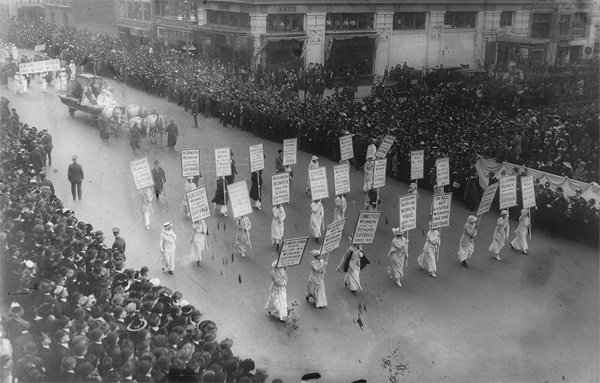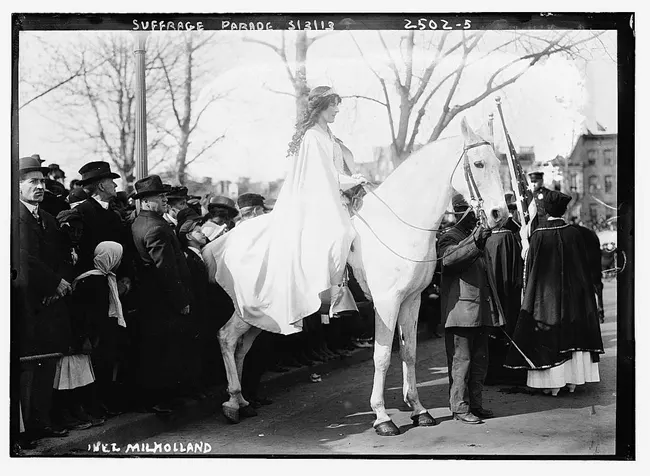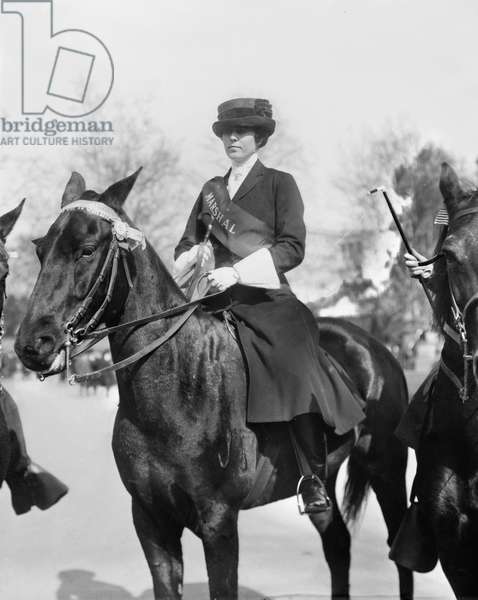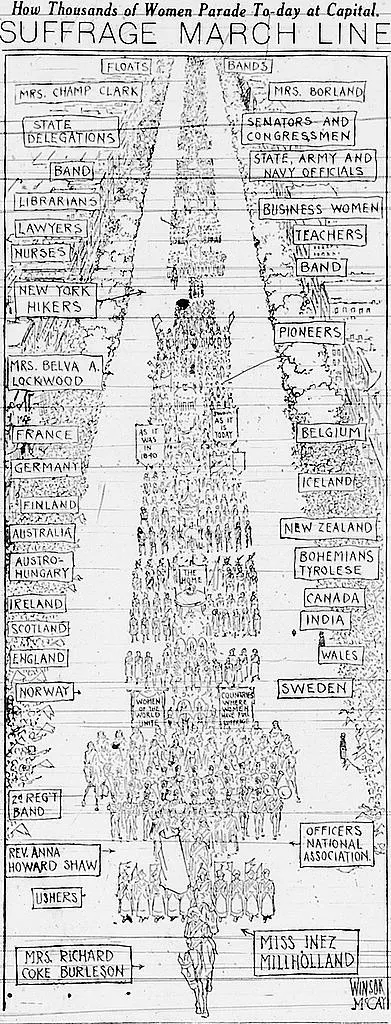Women's Suffrage
National History Day 2022
Debate & Diplomacy
Parade Movement
On March 3, 1913, women gathered in front of the U.S.Capitol and were led out by Grand Marshal Jane Burleson. Thousands of people marched out onto Pennsylvania. Signs held up high, Women with the loudest voice in the front shouting their rights, and a band behind the crowd giving them a grand entrance.
The Suffrage Parade was a gathering of the National American Woman Suffrage Association. Alice Paul led women to march from the U.S. Capitol toward the Treasury Building. They faced many challenges along the way and many spectators were not fond of this parade.

Women march in the Suffrage Parade towards the Treasury Building


Inez Miholland Boissevain was an American suffragist and labor lawyer. She is best known for leading the 1913 women's suffrage parade in Washington, D.C., dressed in a flowing white cloak and crown and riding a white horse.
American suffragist Mrs. Richard Burleson was at the women's suffrage parade riding a horse with an band behind her. The women who were on horses were leading the parade.
The Plan
The Suffrage Parade was planned and executed differently and wasn't really a huge success. Most of the women didn't know what to expect from the crowd. The leaders of the parade showed the nation all the accomplishments of women all over the world. That day women marched with bravery and leadership.

The Suffrage Parade demonstrated that women's participation in the public sphere was dignified and in keeping with America's moral values. Behind the marchers, bands played patriotic songs and elaborate floats illustrated the beauty and competence of women.
Very few of the spectators got to see the full demonstration as Paul had envisioned it. The crowd of at least 250,000 people did not stay on the sidewalk but began to stream into the streets and block the parade route. Police stationed along Pennsylvania Avenue were unable or unwilling to control the crowds. The marchers found themselves trapped in a sea of hostile, jeering men who yelled vile insults and sexual propositions at them. They were manhandled and spat on.
Most women stayed, they locked arms and faced the ambush, some cried while taunts were made at them. The parade was determined to continue and make an impact on the world. Women and Slaves wanted their rights and they would do anything to be able to be free and treated equally.